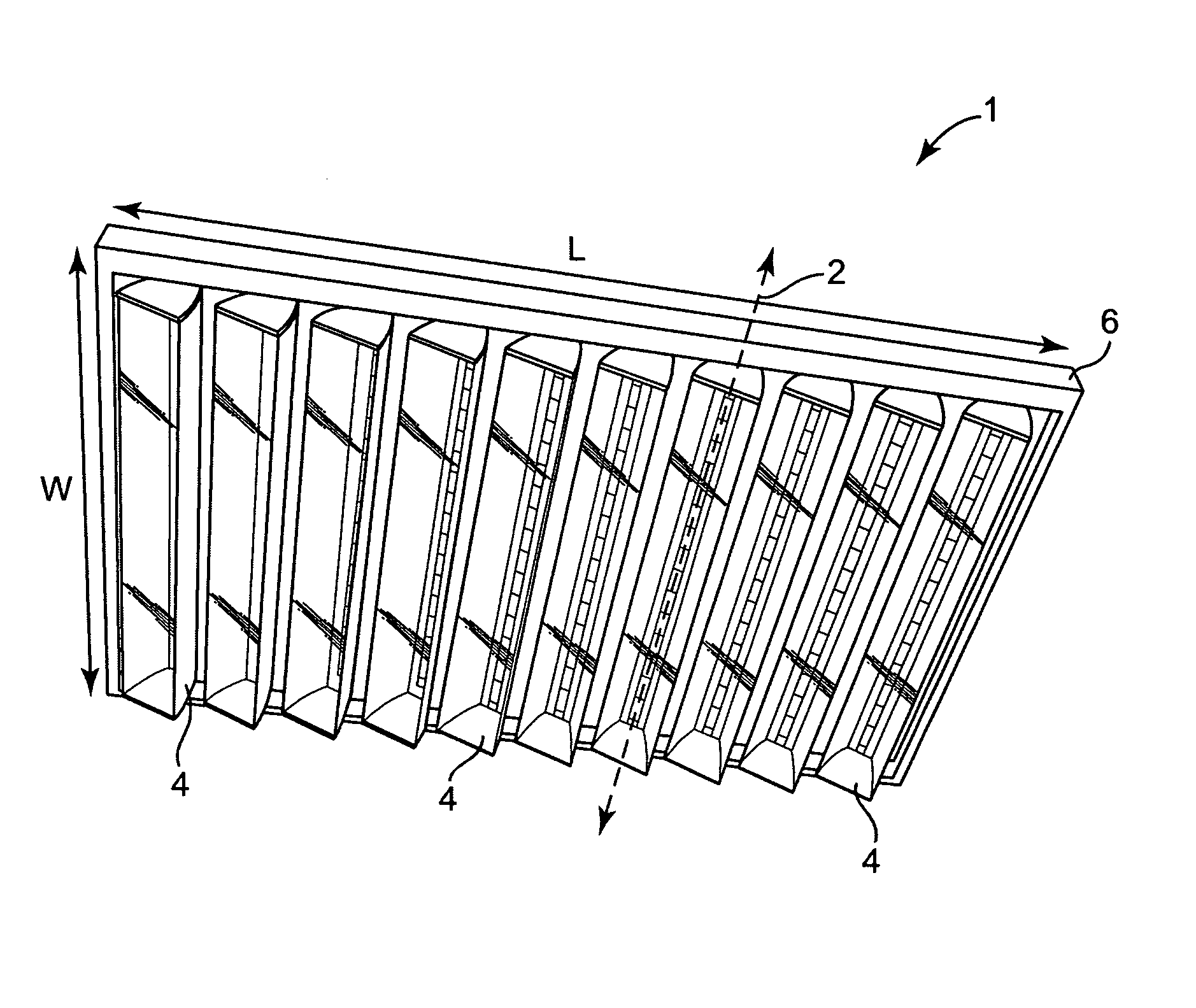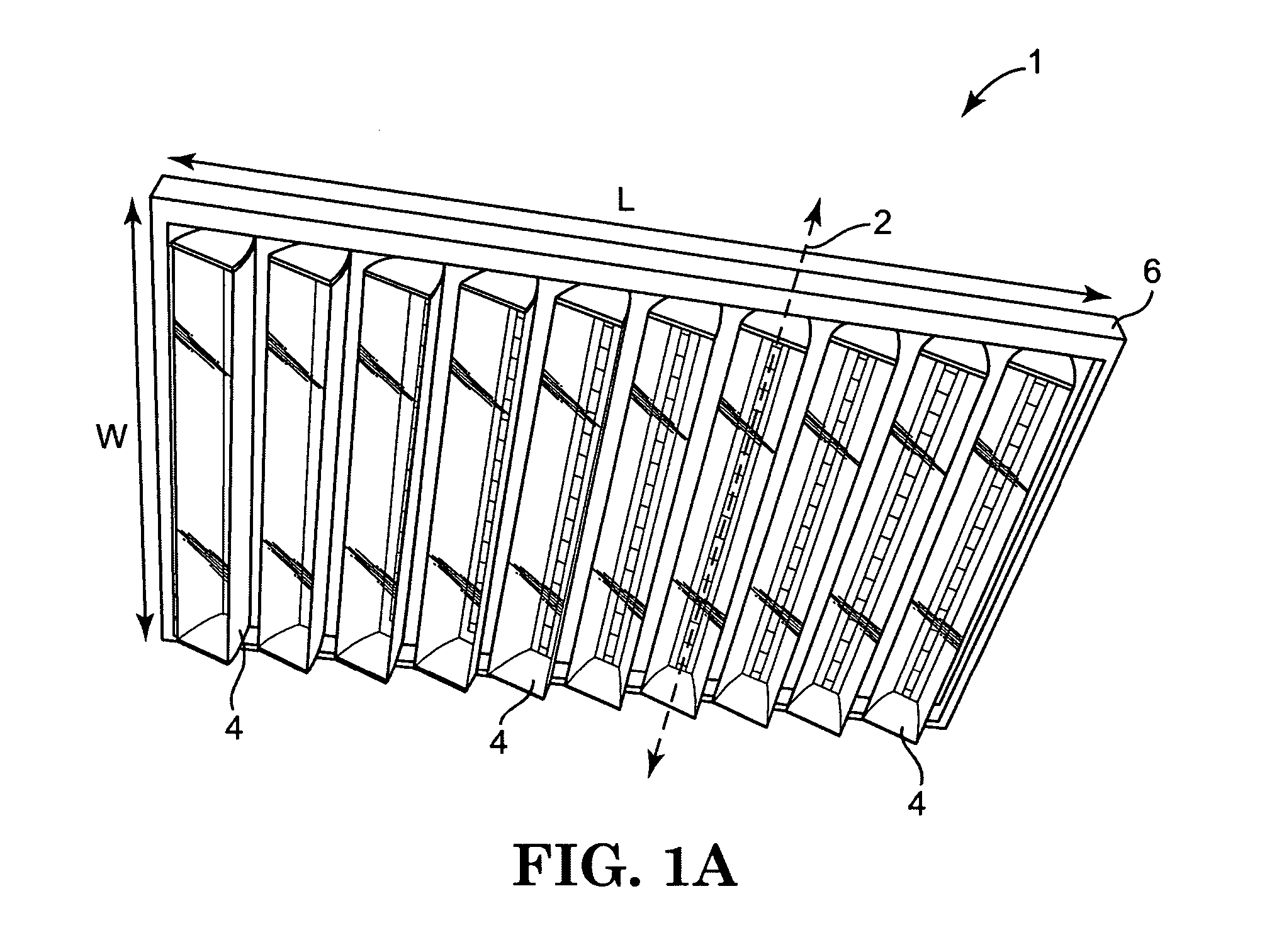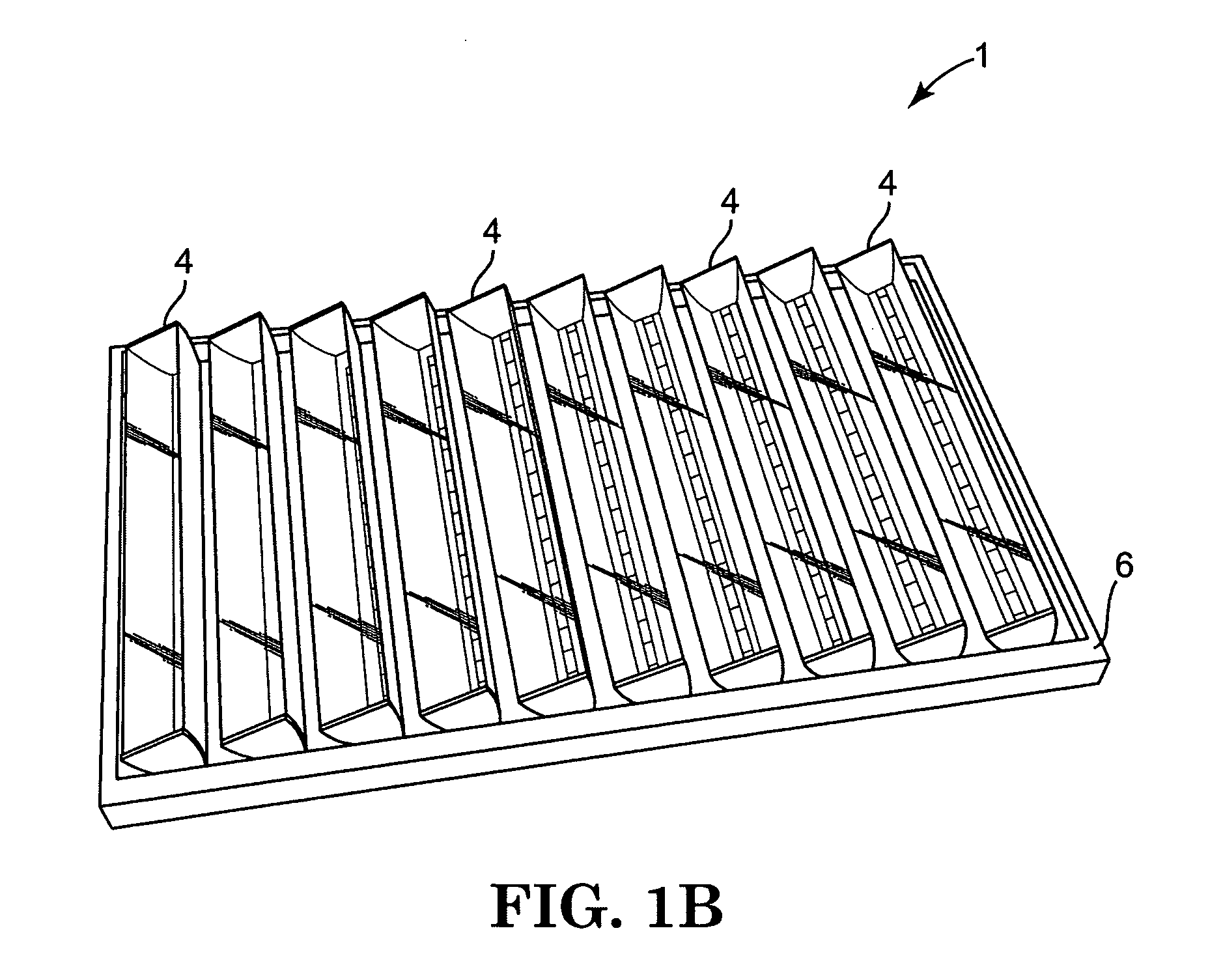Concentrating solar panel and related systems and methods
a technology of solar panels and concentrating modules, applied in the safety of solar heat collectors, lighting and heating equipment, light radiation electric generators, etc., can solve the problems of limiting the market penetration of photovoltaic solar power, affecting the overall daily exposure of users to sunlight, and requiring many years for users' electric bill savings to pay back the cost of solar panels. achieve the effect of increasing the overall exposure to sunlight, and increasing the overall daily exposure of users
- Summary
- Abstract
- Description
- Claims
- Application Information
AI Technical Summary
Benefits of technology
Problems solved by technology
Method used
Image
Examples
Embodiment Construction
[0048] The embodiments of the present invention described below are not intended to be exhaustive or to limit the invention to the precise forms disclosed in the following detailed description. Rather a purpose of the embodiments chosen and described is so that the appreciation and understanding by others skilled in the art of the principles and practices of the present invention can be facilitated.
[0049]FIGS. 1A-6B illustrate at least part of a preferred photovoltaic power system 1 according to the present invention. Photovoltaic power system 1 includes a plurality of moveable, linear concentrator modules 4 mounted in a frame 6, electronic control unit 22, circuit 28, and mechanical linkages (not shown) that allow movement of the modules 4 to track the sun. As shown, each concentrator module 4 preferably includes a reflective trough 8, a cover 10 incorporating a lens 14 as a portion of the cover 10, a receiver 12, end caps 20, and sensor 24. The modules 4 incorporate a hybrid opti...
PUM
 Login to View More
Login to View More Abstract
Description
Claims
Application Information
 Login to View More
Login to View More - R&D
- Intellectual Property
- Life Sciences
- Materials
- Tech Scout
- Unparalleled Data Quality
- Higher Quality Content
- 60% Fewer Hallucinations
Browse by: Latest US Patents, China's latest patents, Technical Efficacy Thesaurus, Application Domain, Technology Topic, Popular Technical Reports.
© 2025 PatSnap. All rights reserved.Legal|Privacy policy|Modern Slavery Act Transparency Statement|Sitemap|About US| Contact US: help@patsnap.com



